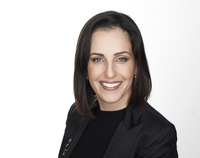
Periodontist, DMD
Department of Periodontology, Hebrew University
Tali Chackartchi graduated in dentistry in 2002. Completed a post-graduate program in Periodontology at the Department of Periodontology, Hadassah & Hebrew University Faculty of Dental Medicine in 2008. EFP accredited specialist since 2009.
In 2009 received a 1-year scholarship to expand her education in implantology from the “Staub Foundation” in the G.Niznick Oral Implant Center.
Currently serves as a Senior Instructor in the Department of Periodontology at the Hadassah & Hebrew University in Jerusalem, ISRAEL.
Her clinical activity is dedicated to periodontology and implantology.
Since 2006, involved in the development, research and clinical work with different computer supported implant planning software’s and guided surgery kits. Dr. Chackartchi shares her experience in international lectures and hands-on courses.
Dr.Chackartchi is a member of the Israeli Post Graduate examination committee, a member of the experts committee of the Osteology Foundation and serves in the scientific committee of several national and international symposiums.
Tali Chackartchi is a Past President of the Israeli Society of Periodontology and Osseointegration.
Mastering guided implant surgery - concepts and implementation
Digitalization and advanced technologies are constantly incorporated in implant dentistry.
The three-dimensional integration of data and computer supported implant planning offer powerful diagnostic tools. They also improve interdisciplinary communication to optimize treatment planning. The resulting virtual planning is transferred to the surgical fields using guides for an accurate implant placement.
To master these advanced tools and reach an accurate result, we must have a comprehensive understanding of the digital workflow. In this presentation, the digital workflow for the surgical guided implant placement will be introduced, and challenged. Every step of the workflow withholds a potential for errors that will influence the outcome, especially in full edentulous cases. These potential errors will be highlighted, alongside suggestions for adjustments to prevent it.